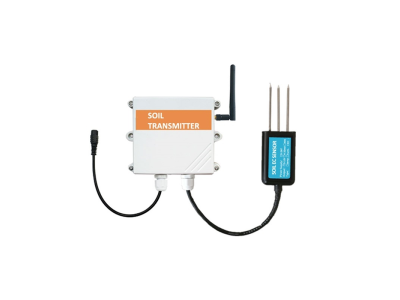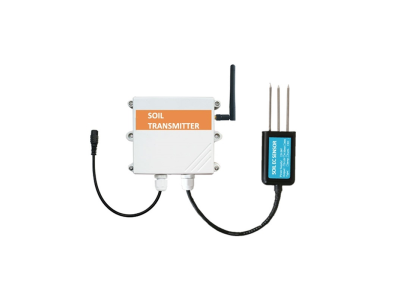Soil sensors have emerged as a game-changing technology in the field of agriculture, revolutionizing precision farming practices and promoting sustainable agricultural practices. These innovative devices provide real-time data on soil conditions, enabling farmers to make informed decisions about irrigation, fertilization, and crop management. This article explores how soil sensors are transforming the agricultural landscape, their benefits, challenges, and future prospects.
Benefits of Soil Sensors in Precision Agriculture:
Accurate Monitoring of Soil Conditions: Soil sensors offer precise and continuous monitoring of essential soil parameters such as moisture content, temperature, pH levels, and nutrient availability. This real-time data allows farmers to understand the dynamic nature of soil and adjust their farming practices accordingly. Accurate monitoring helps optimize irrigation scheduling, minimize water usage, and reduce the risk of over or under-watering crops.

Optimized Resource Management: With the help of soil sensors, farmers can develop targeted nutrient management plans based on the specific needs of their crops. By precisely measuring soil nutrient levels, these sensors aid in adjusting fertilizer application rates, timing, and placement. This optimization minimizes the use of fertilizers, reduces nutrient runoff, and prevents environmental pollution.
Enhanced Crop Yield and Quality: Soil sensors provide valuable insights into the health and nutritional status of the soil, directly impacting crop yield and quality. By ensuring optimal growing conditions, farmers can promote healthy root development, maximize nutrient uptake, and minimize stress factors. This leads to improved crop yields, enhanced product quality, and economic benefits for farmers.
Efficient Water Management: Water scarcity is a global concern, and efficient water management is crucial for sustainable agriculture. Soil sensors help farmers determine the moisture content of the soil accurately. This information enables precise irrigation scheduling, avoiding both water wastage and water stress to plants. With optimized water management, farmers can conserve water resources and contribute to sustainable farming practices.
Cost Reduction: Precision agriculture practices, facilitated by soil sensors, can result in significant cost savings for farmers. By precisely monitoring soil conditions and nutrient levels, farmers can reduce unnecessary inputs, such as fertilizers and water. This reduces production costs, improves resource efficiency, and enhances profitability in the long run.
Challenges and Limitations:
Sensor Calibration and Maintenance: Soil sensors need to be regularly calibrated and well-maintained to ensure accurate and reliable measurements. Calibration involves adjusting sensor readings against standard references to eliminate any systematic errors. Additionally, proper maintenance is essential to prevent sensor drift, physical damage, or malfunctioning.
Data Management and Analysis: The data generated by soil sensors can be vast and complex. Farmers need to manage and analyze this data effectively to derive meaningful insights. However, data management and analysis can be challenging without the necessary tools, expertise, and infrastructure. Advanced analytics techniques and user-friendly software are being developed to address these challenges.
Sensor Variability and Adaptability: Different soil types exhibit variations in their physical and chemical properties. Soil sensors should be adaptable to these variations and provide accurate readings across various soil types. Some sensors may have limitations in certain soil conditions, leading to discrepancies in measurements. Continued research and development are needed to enhance sensor adaptability and reliability.
Initial Investment Costs: The adoption of soil sensors requires an initial investment in purchasing the sensors and associated equipment. This upfront cost may pose a barrier to small-scale farmers or those with limited financial resources. However, advancements in technology and economies of scale are gradually reducing the cost of soil sensors, making them more accessible to farmers.
Future Prospects:
Integration of Sensor Networks: As the technology advances, the integration of multiple soil sensors into a network will enable comprehensive soil monitoring across larger agricultural areas. Networked sensors can provide valuable information on soil variability, allowing farmers to implement site-specific management practices tailored to different areas within their farms.
Internet of Things (IoT) Integration: IoT integration can further enhance the functionality of soil sensors by enabling seamless connectivity and data transmission. This connectivity allows farmers to receive real-time updates on soil conditions through mobile applications or cloud-based platforms. IoT integration also enables automated control systems, where soil sens






